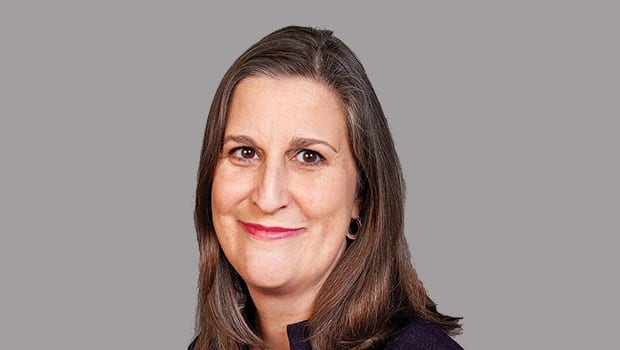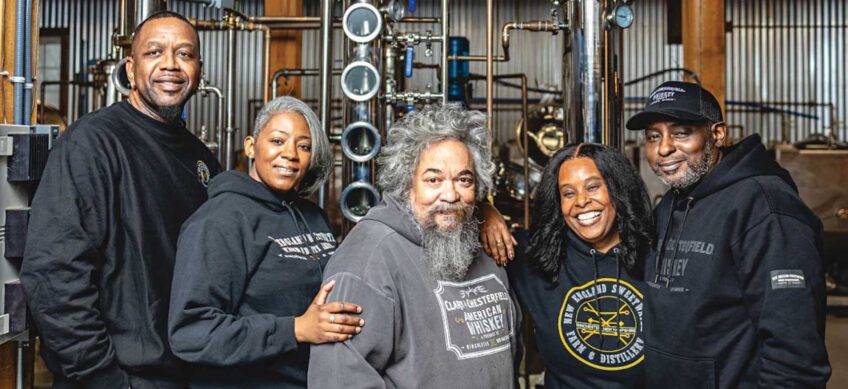Julie Burros: Advocate for the Arts
Cultural planning crucial to success of Boston’s creative economy

Late last year, Julie Burros became Boston’s first Chief of Arts and Culture in more than 20 years. She is here to create a cultural plan for the city and work as an advocate for the arts community in the creation of new policy that will help keep art and culture strong in Boston.
Burros came to Boston from Chicago where she served as director of Cultural Planning for the City of Chicago’s Department of Cultural Affairs and Special Events, a position she held for more than 15 years. She developed a highly praised Cultural Plan for Chicago in 2012.
In Boston, Burros oversees a staff of nine, housed within the Boston Arts Commission and the Boston Cultural Council, with a budget of $1.3 million. Her position was created by Mayor Martin Walsh to elevate arts and culture by separating it from the previous administration’s Office of Arts, Tourism, and Special Events.
She is steering Boston’s 15-member Cultural Planning Committee through the city’s cultural planning process. The plan will be shaped by a public conversation with the goal of creating a long-term vision that better capitalizes on existing resources and makes the city’s arts and culture sector stronger, more accessible, more sustainable and more diverse. She will also oversee implementation of the plan and evaluate its progress as it moves forward.
She spoke to Banner Biz about just what it means to be Boston’s chief of Arts and Culture and how she sees the Culture Plan as crucial to the future of the arts in the city and the growing success of the creative economy.
As Boston’s first chief of Arts and Culture in more than 20 years what do you view as your most important priority in reestablishing what your office does for the city? What about Boston now necessitates a stronger focus on the city’s arts and culture?
During the transition, the mayor posed the question: “How can Boston be a municipal arts leader?” He also spelled out very specific values for cultural planning which include: diversity, equity, respect, imagination, innovation, creativity, access, accountability, collaboration, transparency and fun. Boston always should have had a strong municipal support system for the arts and culture sector: it’s long overdue. The only thing that’s different about now is the political will to actually do it is being put into place. The resoundingly positive response to the creation of the chief of Arts and Culture role and my appointment really shows how much pent up demand there has been for this kind of arts leadership at the municipal level.
One of your main tasks is the creation of Boston’s Cultural Plan. What exactly does this mean and why is it important to establish such a plan for the city?
Creating a cultural plan means that we are going to talk to the people of Boston about the role of culture in their lives, seek out what the needs are, what are the priorities, and determine the role of government in supporting the growth of the cultural sector. Because there are so many different potential directions we can go in, having a plan to determine the most acute needs, and crafting a clear path toward those goals is critical. The plan will lay out a strategic framework so that we can be as impactful as possible with our investment, policies and programs. Having a plan helps us to articulate what success will look like for Boston.
What are your early reactions to the current arts and culture environment in Boston? Are you encouraged by what you have seen so far in your new position?
I’ve been getting out to as many cultural events as possible all over the city. The great news is that there is a lot going on, every single day; so much so that I fear I am missing so much all the time. That said, I have met a lot of people who have no idea how to tap into what is happening. There seems to be a real lack of awareness as to how people can access what’s going on.
How can you draw on your experience from Chicago in your work for Boston?
For the creation of the cultural plan, my experience is directly relevant; every day that we shape the project I can offer what did or didn’t work for the plan in Chicago. It’s been great to have the opportunity to improve upon what we did accomplish, and be that much ahead of the game this time around. I think our approach for Boston is going to prove to be very innovative and responsive to the particular circumstances here. Another discovery is how similar municipal government really is from one city to the other. The acronyms are all slightly different but the same pieces are all there.
You also will steer Boston’s 15-member Cultural Planning Committee. What are your impressions of working with this committee so far?
They are a great resource of experts to have access to. In short order, I’ve been able to develop valuable connections with some of the most savvy arts experts in town.
How can you draw on the knowledge and strength of others to support the city’s arts and culture?
Because I am so new, I have to draw on the knowledge of others, they are really the experts on what has happened here before, and they have access to information and networks that would have taken me years to tap into.
The city has described your work as at the intersection of planning, culture, community development and capacity building. How do all these facets come together in your job and why is it important to bridge these things?
They all come together in the cultural plan and it’s vitally important to bridge them because arts and culture can play a role in every aspect of the work that the city does. A great example is that we know that the arts can be an important part of healing, and by embracing that fact we can approach the work of public health with innovative tools and effective approaches at our disposal.
As chief of Arts and Culture yours is a crucial leadership role in supporting Boston’s arts and cultural community. What would you say are some of your strengths as a leader? What are some things you have learned over the years that has made you a better leader?
I’ve received positive feedback about my clarity of purpose, communication skills and that I am decisive. I’ve learned a lot of lessons about leadership from many people with whom I have worked, and something I feel strongly about is a culture of respect and empowerment for staff at all levels.
You have also been charged with creating a vehicle through which the city can increase diversity and inclusion in the arts. Why is this important? Have you done work in this area before? Can you discuss some previous success in this regard or challenges you anticipate?
It’s important that everyone in Boston have access to the benefits that arts and culture provide for people in terms of their personal growth, their education, their careers or work and the well-being of their families. One of the big successes of the Chicago Cultural Plan was the creation of an Arts Education Plan for the public schools. Resources are always going to be a big challenge.
What is your early vision for arts and culture in Boston over the next several years as well as over the next decade or more?
I’d like to see a Boston that can realize its full potential as a thriving city through arts and culture. My work is really about the vision of the people of Boston, what I bring is the experience, the expertise and the tools to accomplish that vision on the mayor’s behalf.
Connecting with a younger generation can be seen as crucial to securing the future of the city’s arts and culture sector in terms of relevancy and growth. What are some of your efforts to do so?
We will be very deliberate in our cultural plan civic dialogue to engage youth and younger adults through some of our fantastic networks, such as the OneIn3 group and the Mayor’s Youth Council.
This story appears in our May issue of Banner Biz. To read the full issue, click here







